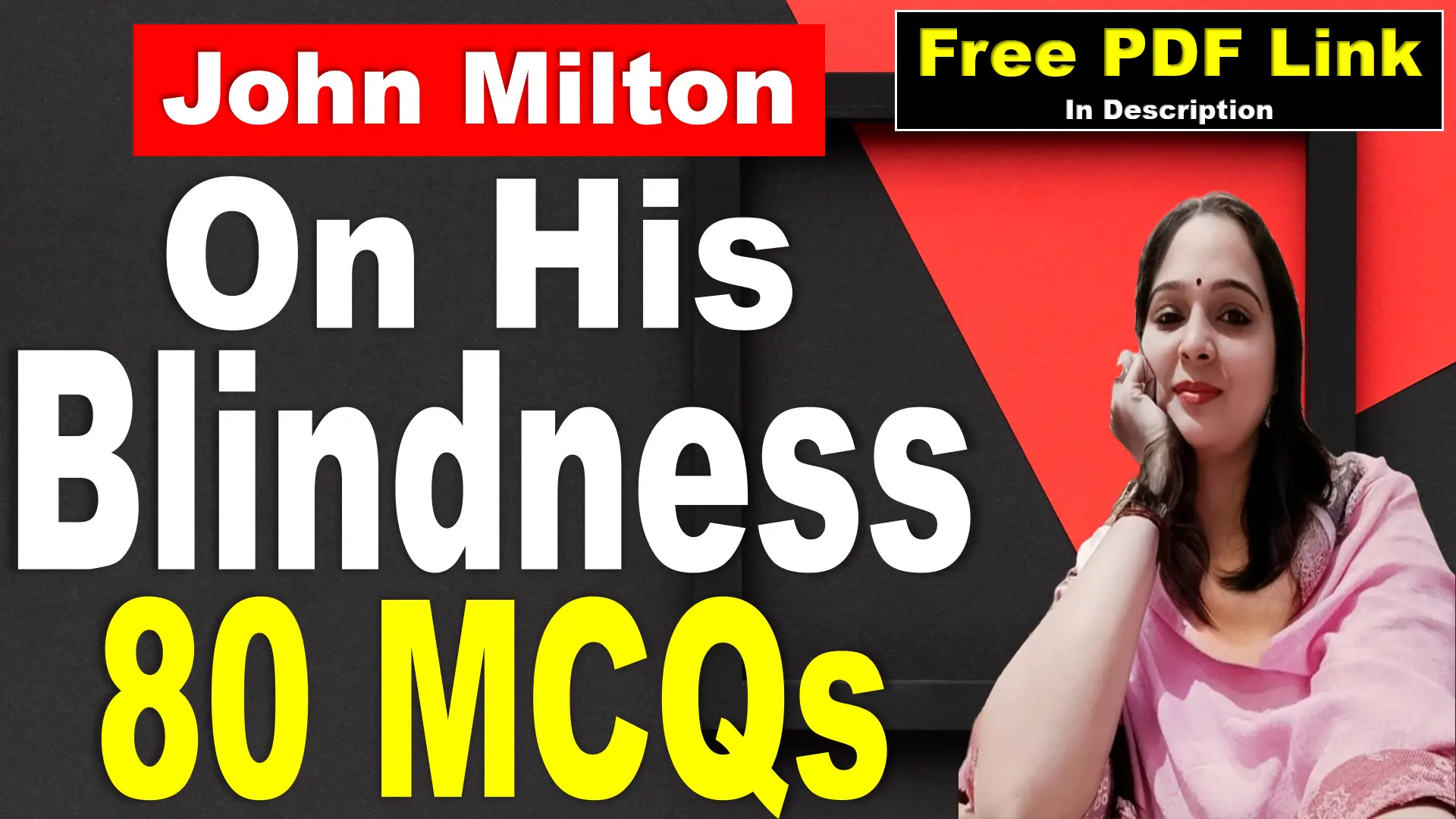
There is Pleasure in the Pathless Woods Questions and Answers
Very Short Answer Questions
Who wrote the poem?
Lord Byron (George Gordon Byron).
From which larger work is the poem taken?
Childe Harold’s Pilgrimage (Canto IV).
What poetic form is used in the poem?
Spenserian stanza.
What is the rhyme scheme of the Spenserian stanza?
ABABBCBCC.
What meter is used in the poem?
Iambic pentameter for the first eight lines and an Alexandrine (iambic hexameter) for the ninth.
What does the “pathless woods” symbolize?
Freedom and escape from societal constraints.
What does the “lonely shore” represent?
Solitude and introspection.
What is the speaker’s relationship with nature?
He loves nature deeply and finds joy and peace in it.
How does the speaker view human society?
He does not hate humanity but prefers the purity of nature.
What is the “music in its roar” referring to?
The harmonious sound of the sea.
What is the tone of the poem?
Contemplative and reverent.
What is the central theme of the poem?
The beauty and spiritual power of nature.
What does the speaker mean by “I love not Man the less, but Nature more”?
He values nature more than human society.
What does the speaker feel when in nature?
A mystical connection with the universe.
What poetic device is used in “music in its roar”?
Personification.
Which Romantic ideal is reflected in the poem?
The glorification of nature and the value of solitude.
What does the phrase “mingle with the Universe” mean?
To feel a spiritual unity with the cosmos.
What type of imagery is prominent in the poem?
Nature imagery (woods, shore, sea).
What movement does the poem belong to?
The Romantic movement.
What message does the poem convey?
Nature offers peace, joy, and transcendence that society cannot provide.
Short Answer Questions
Who is the author of the poem, and what inspired him to write it?
The author is Lord Byron, a prominent Romantic poet. The poem is inspired by his travels across Europe and his love for nature, solitude, and the sublime. It reflects Byron’s Romantic ideals and his preference for the natural world over societal constraints.
What is the Spenserian stanza, and how is it used in the poem?
The Spenserian stanza is a nine-line poetic form with a rhyme scheme of ABABBCBCC. The first eight lines are written in iambic pentameter, and the ninth is a twelve-syllable Alexandrine. Byron uses this structure in Childe Harold’s Pilgrimage to create a flowing, harmonious rhythm for his reflective and descriptive narrative.
What is the tone of the poem, and how does it support the theme?
The tone is contemplative, peaceful, and reverent, with a touch of melancholy. It supports the theme by emphasizing the speaker’s deep emotional connection with nature, his sense of joy and solace in solitude, and his dissatisfaction with the artificiality of human society.
What does the phrase “There is society where none intrudes” mean?
This paradoxical statement means the speaker finds companionship and connection in solitude with nature. It suggests that being in the natural world offers a deeper sense of belonging and peace than human interactions.
How does the speaker contrast his love for nature with his feelings about humanity?
The speaker states, “I love not Man the less, but Nature more,” clarifying that he does not hate humanity but finds greater joy and peace in nature. Nature’s purity and harmony contrast with the complexities and constraints of human society.
What role does nature play in the poem?
Nature serves as a source of joy, freedom, and spiritual transcendence. The speaker experiences harmony and unity with the universe through his connection to natural elements like the woods, the shore, and the sea.
What is the significance of the imagery in the poem?
The imagery of the “pathless woods,” “lonely shore,” and “deep Sea” creates vivid mental pictures of untouched natural landscapes. It symbolizes freedom, solitude, and the vastness of existence, reinforcing the poem’s themes of nature’s beauty and spiritual power.
What does the speaker mean by “To mingle with the Universe”?
The speaker expresses his desire to connect spiritually with the cosmos through his experiences in nature. This feeling of transcendence allows him to escape societal constraints and feel part of something much greater than himself.
How does the poem reflect the ideals of Romanticism?
The poem reflects Romantic ideals by celebrating the beauty and power of nature, valuing solitude and individual emotion, and exploring spiritual transcendence. It also critiques human society’s artificiality and highlights the importance of personal introspection and connection with the sublime.
What is the main message of the poem?
The poem conveys that nature provides a unique source of joy, peace, and spiritual fulfillment that human society cannot offer. It emphasizes the value of solitude, the importance of connecting with the natural world, and the transcendence that comes from such a relationship.





